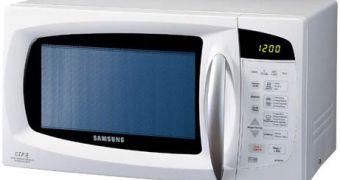Microwave ovens heat up food by generating an electromagnetic wave with an alternating electric component. As the wave interacts with molecules of water in the food, having a positive charge at one end and a negative one at the other, it forces them to rotate and align with the electric field. At the same time, other molecules in the vicinity of the rotating ones are forced to vibrate, thus heating the food rapidly.
Currently available microwave baking dishes are transparent to microwaves and receive heat only from the food, meaning that part of the energy used to generate the electromagnetic wave is used to heat the container. But with the help of new exotic ceramics, the situation could be completely reversed, so that the container heats up the food in order to minimize energy loss.
By mixing petalite powder with magnetic iron oxide, Sridhar Komarneni of the Pennsylvania State University along with Hiroaki Katsuki and Nobuaki Kamochi of the Saga Ceramic Research Laboratory have created iron oxide-petalite, a ceramic material that has the property of absorbing microwave radiation. The responsibility of interacting with the microwave falls to the iron oxide inside the material, while the petalite only has the role of maintaining the heat as the oven is shut down.
Tests later revealed that in a 600 watt oven, standard microwave baking dishes reach a temperature of about 60 degrees Celsius after only 70 seconds, while the new material heats up to as much as 200 degrees Celsius, a temperature which further rises to nearly 300 degrees in only 30 seconds after the oven was switched off. Komarneni says that this is due to the fact that the ceramic material requires a certain amount of time to spread the heat generated by the iron oxide component.
"The microwave-ware saves about 50% energy compared to the conventional microwave ware," Komarneni added.
The new material is already available in Japan and could be used in a short while to make microwave backing dishes that could shorten the cooking time and enhance the efficiency of microwave ovens.

 14 DAY TRIAL //
14 DAY TRIAL //